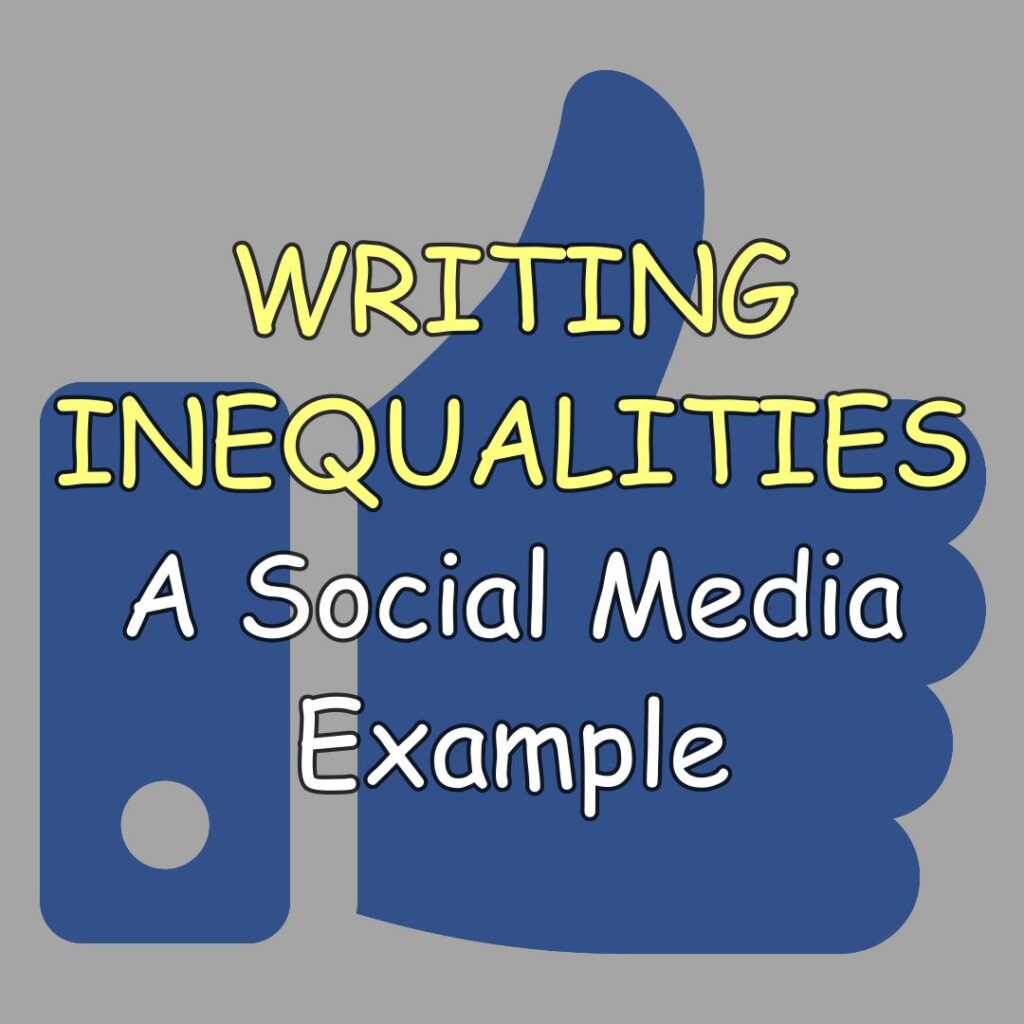Safety and Security of Social Media and the Role of Mathematical Inequalities in It
Introduction
During the past twenty years, more and more people have been using social media platforms like Facebook or X to discover news, share opinions, and chat online. But did you know that a significant portion of the users engaging in these chats aren’t actually real people, but rather malicious social bots? Let’s explore what social bots are and how writing mathematical inequalities you learn in school are used to combat them.
What are Malicious Social Bots?

A malicious social bot is a computer program that appears to be a real human account on a social network, but in reality, it’s not. These bots are often created to join political discussions, bully people, and spread false information.
The problem is quite serious. For example, in 2018, Facebook reported that it had removed over 1.5 billion fake accounts. By 2023, malicious social bots accounted for 30% of all internet traffic. This high number underscores the importance of combatting these bots.
Let’s explore how cybersecurity experts use their knowledge about how to write mathematical inequalities to fight against social bots.
How to Write Inequalities that Help? An Example
To understand whether a nickname belongs to a real person or a malicious social bot, let’s have a look at a simple example. Imagine we have 10 accounts on a social network. Every account has friends and followers. For example, the first account has 250 friends and 200 followers. The second account has 300 friends and 3 followers. The third account has 150 friends and 7 followers, and so on – as you can see in the table below.

Now, let’s calculate the followers-to-friends ratios for these accounts (i.e., divide the number of followers by the number of friends). In the case of the first account, it will be:
\[\frac{200}{250} = 0.8\]
For the first account, this ratio is 0.8. For the second one, it’s 0.01. For the third one, it’s 0.05, and so on – as you can see in the table below.

Now, let’s plot these numbers on a number line:

Pay attention, the followers-to-friends ratios for 9 accounts are less than or equal to 0.2, but one account, with the ratio of 0.8 significantly differs from the rest. This is somewhat suspicious, and it might be a social bot. Therefore, the security team of the social network should check it.
Checks like these are typically performed by special computer programs, and we’ve just seen an example of a simple algorithm for such a program. Let’s write it as an inequality, similar to what you do in your math class. The inequality would be:
‘If the quotient of the number of followers and the number of friends is greater than or equal to 0.2, the account is suspicious.’
The inequality can be expressed mathematically as:
\[
\frac{\text{Number of Followers}}{\text{Number of Friends}} \geq 0.2
\]
This notation indicates that if the quotient (division result) of the number of followers and the number of friends is greater than or equal to 0.2, the account is considered suspicious.
Will This Inequality Always Work?
While this example is straightforward and illustrates the basic principle of how inequalities help filter out potentially suspicious accounts, in reality, this algorithm may not work well. For example, celebrities or well-known figures may have millions of followers and a relatively low number of friends, resulting in a very high ratio, like in the example below:
\[\frac{3,000,000 \, \text{followers}}{100 \, \text{friends}} = 30,000\]
As you can see, our previously written inequality rule (‘If the quotient of the number of followers and the number of friends is greater than or equal to 0.2, the account is suspicious.’) will not work here. If we would have our algorithm based on this inequality, accounts of celebrities and well-known people would get banned. Therefore, more complex inequalities are needed.
Conclusion
Social networks utilize many variables and the assistance of Artificial Intelligence to analyze the behavior of their users in an attempt to identify malicious social bots. These variables include how often users hit the ‘Like’ button, how often they post, the types of devices they use, how much they reshare content, the size of files they upload, the number of emojis they use in their posts, and many others.
References
Interested in learning more about social bots? Below are some sources we used to create this article. These resources will help you investigate the topic in more depth.
First, you can watch a video from Deutsche Welle, a German public broadcasting service. This video explains what social bots are in simple language.
Also a general article about social bots on a Cloudfare may give you good overview of who are social bots.
Finally, following are two scientific publications that we used to make sure that the information in this blog post is valid. These articles are written in scientific language that might be a bit difficult to read, but even a quick look at these will demonstrate how important math is for ensuring security in the Internet.
Video Version
What other inequalities are used to detect bots? How writing linear inequalities help in bot detection? We explore it in more detail in our video. The video explains it all in an animated and easy-to-follow way. Enjoy the preview below or subscribe to get access to all our full videos.
Further reading:
This article explained how analyzing data and writing inequalities helps make the digital world safer. It’s a great example of how mathematical methods help analyze large amounts of data (also called Big Data). We have another article that explains how math helps make the digital world better:
Also, in addition to inequalities, this example involved calculating ratios (followers-to-friends ratio). We have another article that involves calculating ratios and proportions in real life:
